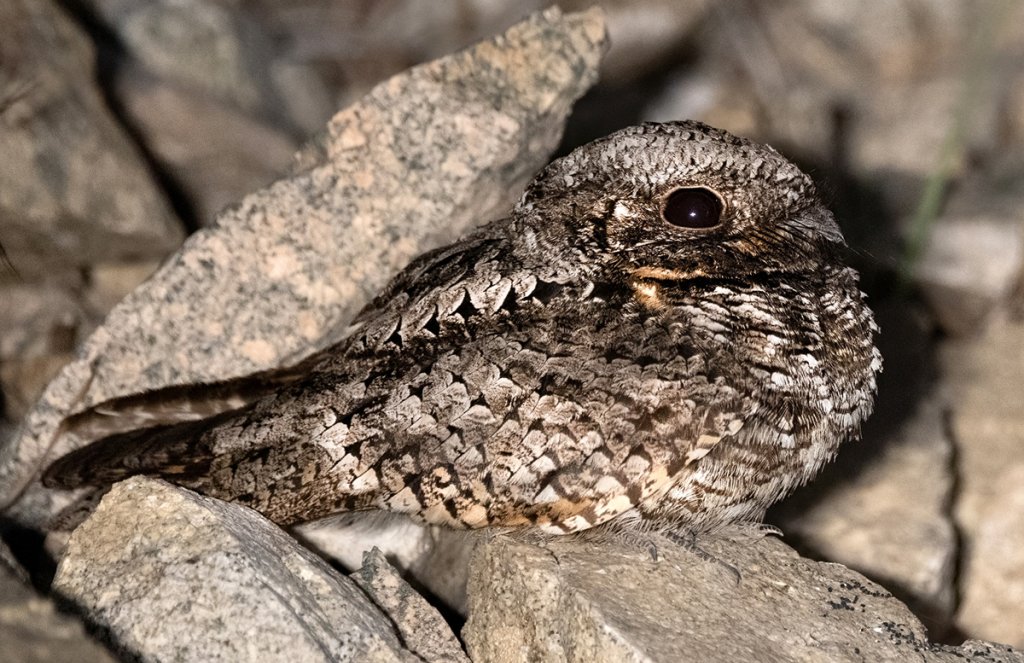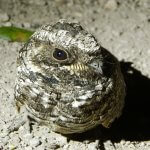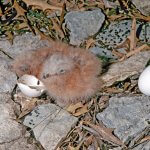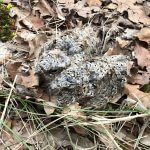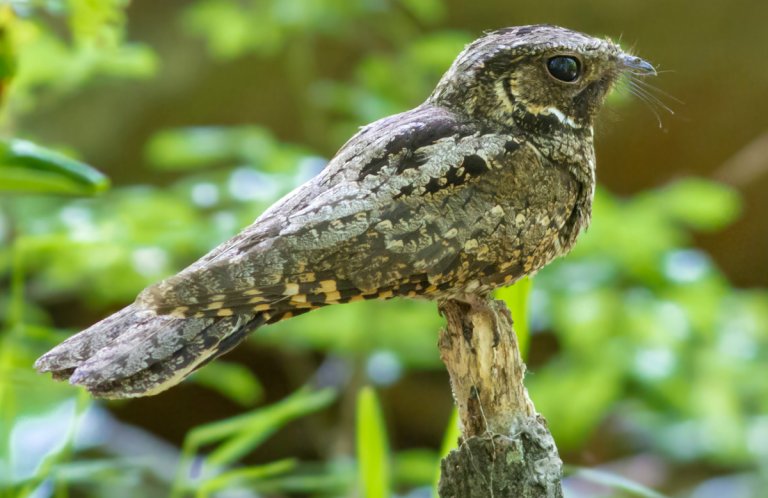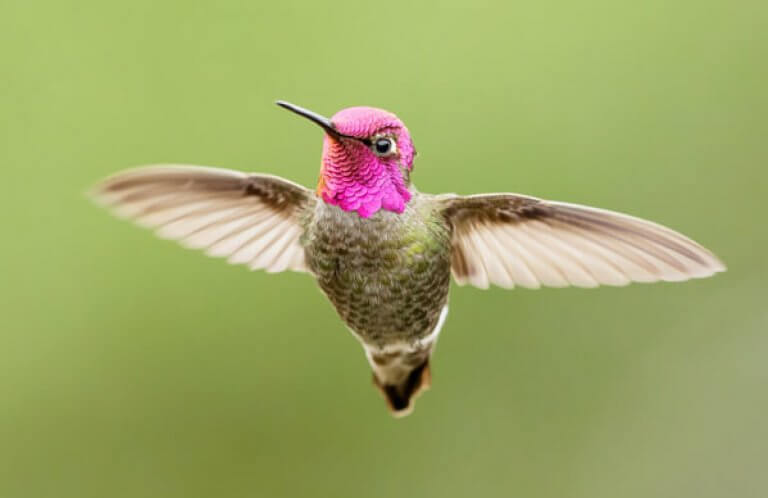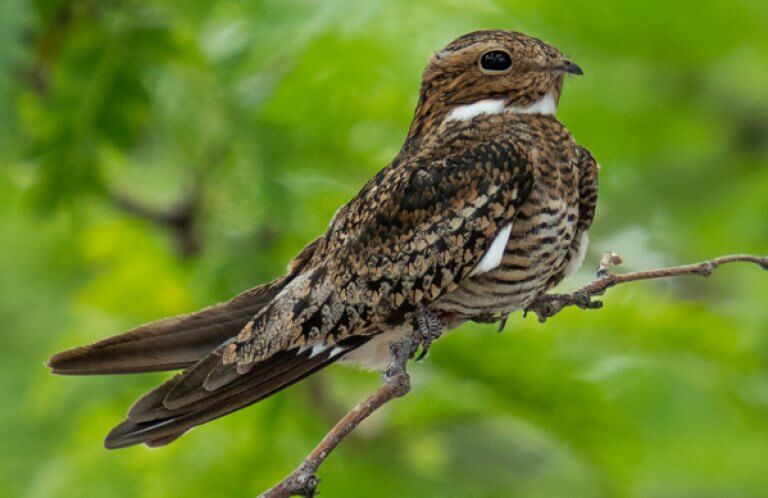About
The Common Poorwill is the smallest North American nightjar, with short, rounded wings and a short tail with small white outer tips. In the same family as the Eastern Whip-poor-will and Chuck-will's-widow, the Common Poorwill shares their nocturnal habits, and is rarely spotted during the day. Its cryptic plumage of mottled gray and brown provides excellent camouflage, and its large, dark eyes are well-adapted for vision in low light.
Another interesting feature the Common Poorwill shares with its near relatives is a notched, comb-like middle toe, called a pectinate claw, which helps these extremely short-billed birds keep their feathers preened.
During the day, the Common Poorwill usually roosts on or low to the ground, sometimes in small groups. When flushed, it flies away close to the ground in a series of moth-like flutters and short glides.
This nightjar has a unique behavior all its own; in fact, it's the only bird species that shows this adaptation.
Torpor Timing
Although many hummingbird species, including the Anna's and Rufous Hummingbird, enter torpor nightly, the Common Poorwill is the only bird species known to enter a state of torpor (similar to hibernation) for extended periods of time, up to several weeks. This adaptation is a response to the extreme temperature fluctuations of its preferred habitats, or a decrease in food sources. Scientists studying the Common Poorwill in winter have found that this remarkable bird can lower its body temperature to 41° F and reduce its oxygen consumption by more than 90 percent during these periods of torpor.
While torpid, this bird conceals itself in rockpiles or against a tree, shrub, or log. Native Americans of the Hopi tribe, who regularly encountered these torpid nightjars, called this bird hölchko, which means "The Sleeping One."
Common Poorwills must also deal with extreme heat, which they accomplish by panting and releasing water through the skin.
Songs and Sounds
This species is named for its repetitive poor-will call. The Common Poorwill will call year-round but is most vocal during its breeding season.
Listen here:
Breeding and Feeding
A male Common Poorwill establishes and defends a territory when he returns to his breeding area each spring. After mating, a pair selects a nest site on open ground near the shelter of a rock, shrub, or log. The nest is a shallow scape, where the female lays a clutch of two eggs. Both parents take turns incubating the clutch for almost a month, then brood their young after hatching. The adults feed their young regurgitated insects.
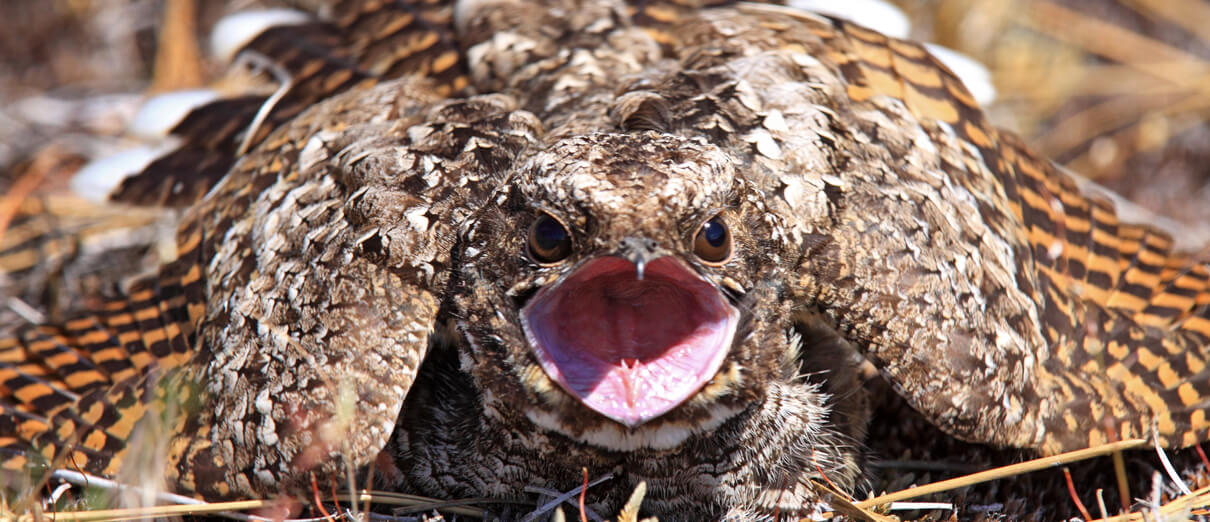
A breeding pair of Common Poorwills may move their eggs and young short distances if disturbed. After their first clutch fledges, the pair will sometimes raise a second brood, usually in a scrape close to the first nesting spot.
The Common Poorwill, like relatives such as the Common Nighthawk, is insectivorous. It forages in the crepuscular hours or at night, flying after insects from a low perch or the ground. It preys upon nocturnal moths and beetles, detecting them by sight and the whisker-like rictal bristles around its bill, then swallowing them whole in its large mouth.
Region and Range
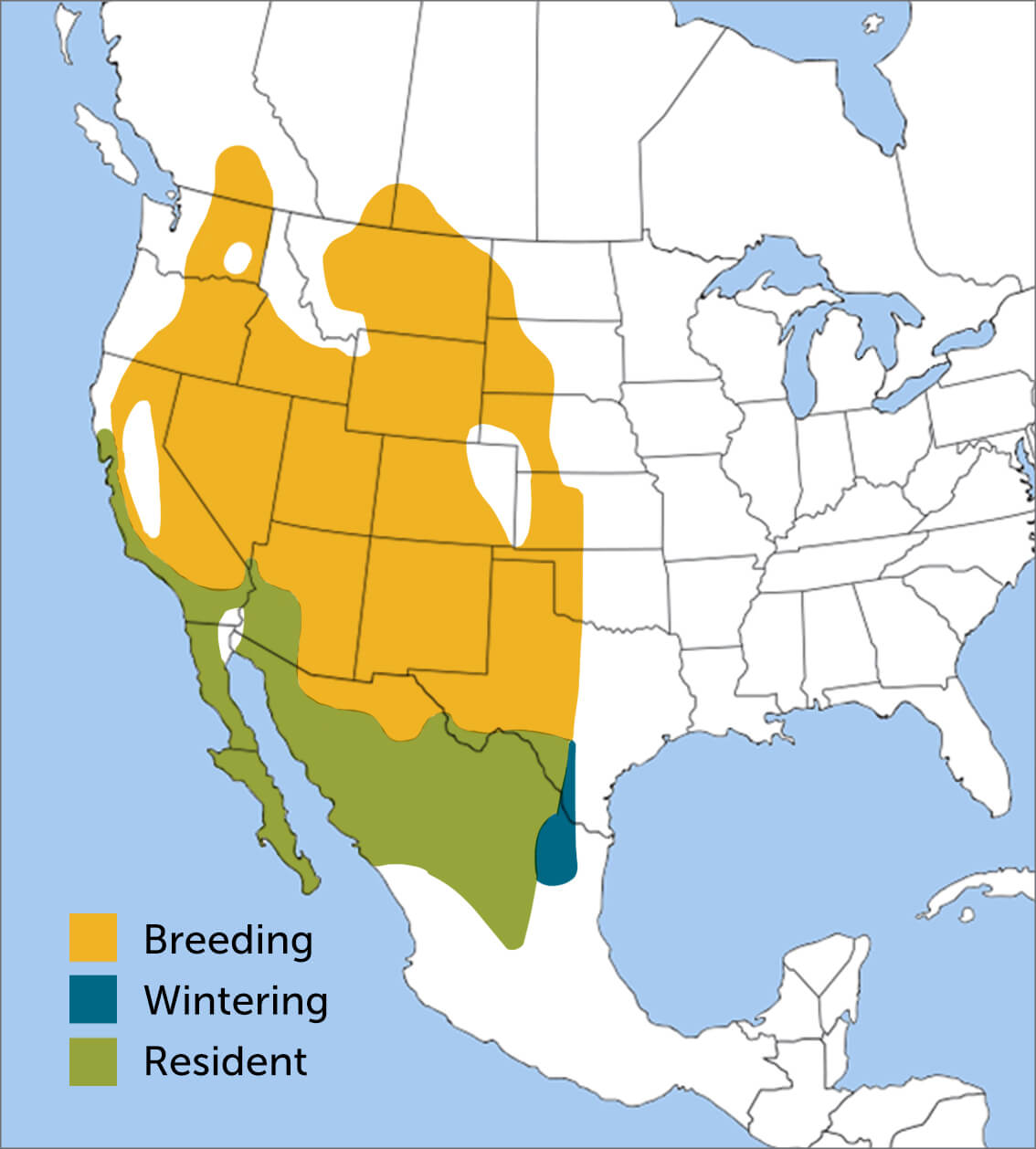
The Common Poorwill is a species of western North America, from southern Canada to central Mexico. Northern populations are migratory, moving to the southern portions of their range in the winter and returning each spring. Some southern populations are altitudinal migrants, moving to higher elevations for the breeding season and returning to lower elevations during the winter. This species is divided into six subspecies based on geographic distribution and plumage color.
Conservation

Help support ABC's conservation mission!
Although the Partners in Flight 2016 Landbird Conservation Plan shows a decreasing population trend for the Common Poorwill, this species remains fairly common, although cryptic, across its range. It may benefit from human activities such as cattle grazing or logging, which create additional open habitat for nesting. Individuals foraging along roadsides risk fatal collisions with vehicles.
ABC's BirdScapes program, which protects habitats across birds' life cycles, continues work to conserve the arid, open habitats that shelter the Common Poorwill and a number of other bird species such as the Rock Wren, Pyrrhuloxia, and Scaled Quail.
Get Involved
Policies enacted by the U.S. Congress and federal agencies, such as the U.S. Fish and Wildlife Service, have a huge impact on U.S. birds. You can help shape these rules for the better by telling lawmakers to prioritize birds, bird habitat, and bird-friendly measures. To get started, visit ABC's Action Center.
Living a bird-friendly life can have an immediate impact on the birds around you. Doing so can be as easy as adding native plants to your garden, avoiding pesticides, and keeping cats indoors. To learn more, visit our Bird-Friendly Life page.
American Bird Conservancy and our Migratory Bird Joint Venture partners have improved conservation management on more than 8.5 million acres of U.S. bird habitat — an area larger than the state of Maryland — over the last ten years. This is a monumental undertaking, requiring the support of many, and you can help by making a gift today.





































